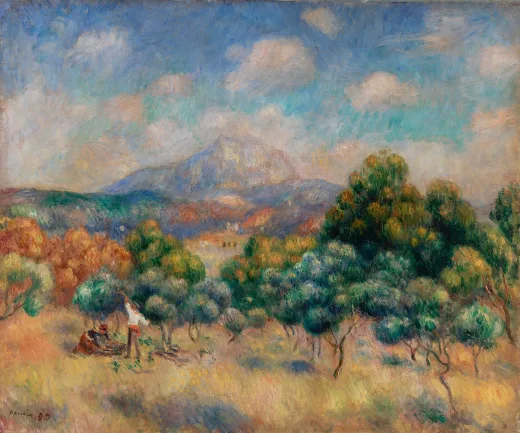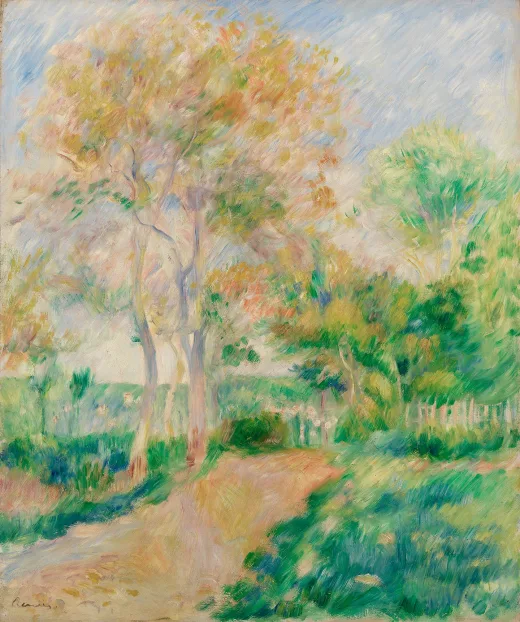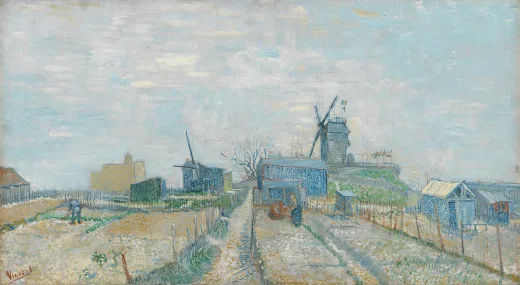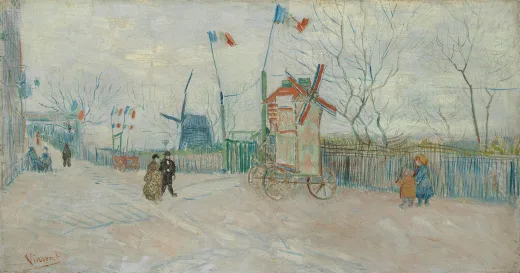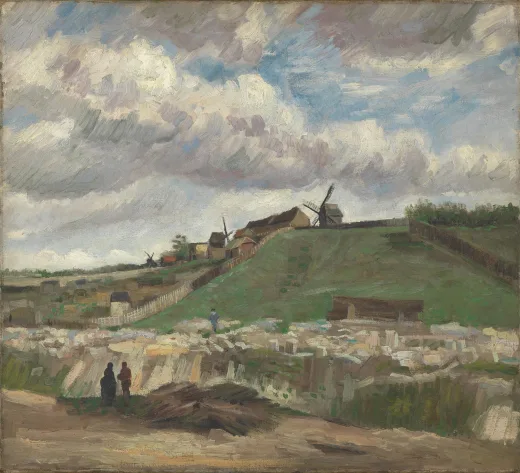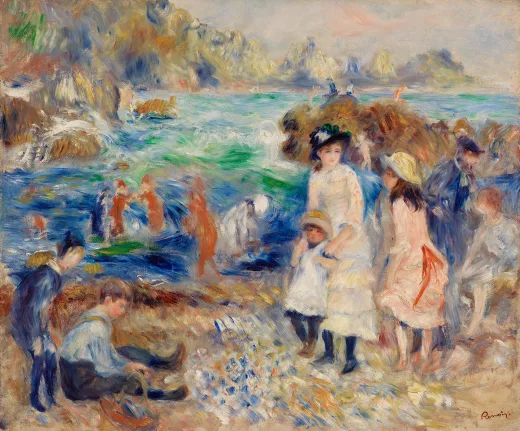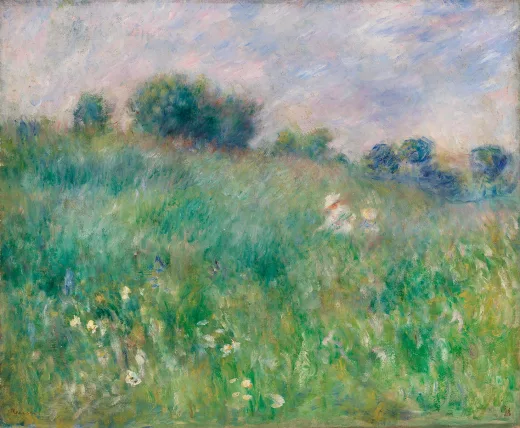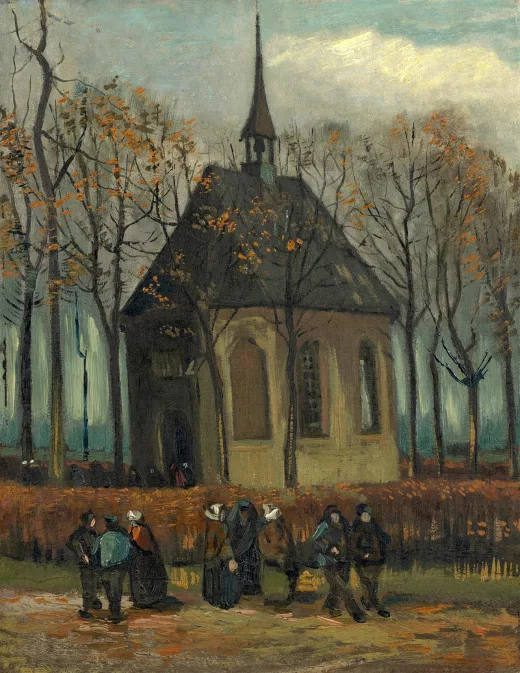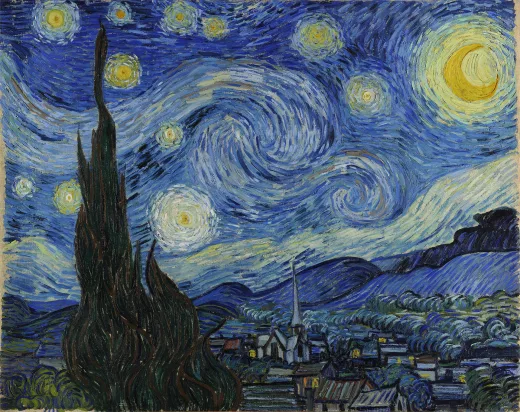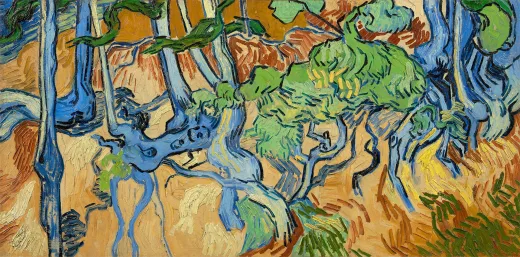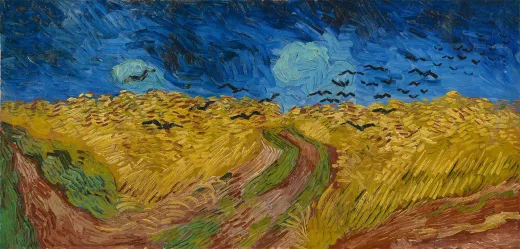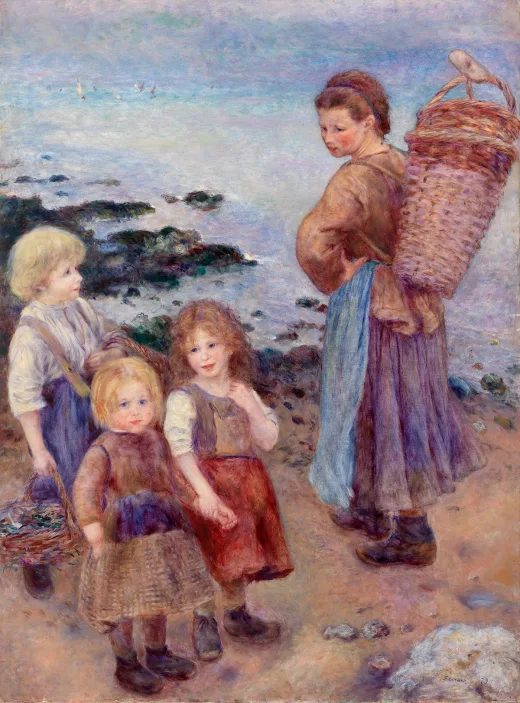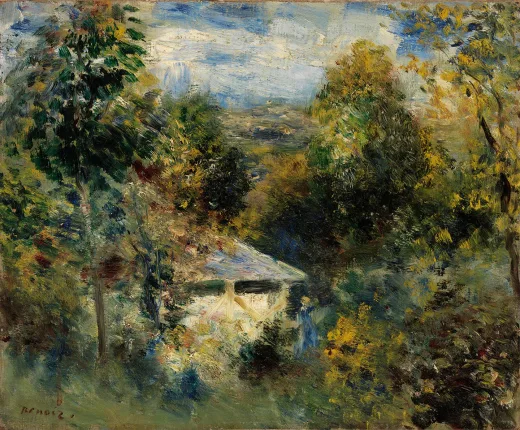托马斯·科尔《残塔夕照:意大利海岸风光》高清图片
原图尺寸:4096×3011像素(72 DPI)高清图
下载原图消耗2艺点
文件大小:23.02 MB
下载格式: ZIP ( PNG+ JPG )
作品名称:残塔夕照:意大利海岸风光
Italian Coast Scene with Ruined Tower
作品作者:托马斯·科尔(Thomas Cole)
创作时间:1838年
作品风格:浪漫主义
原作尺寸:86.4x116.8厘米
作品材质:布面油画
收藏位置:美国国家美术馆
©CC0公共领域

作品简介
(画面解读)
在这幅横向构图的风景杰作中,我们的视线越过青草覆盖的嶙峋海岬,望向矗立在托帕石蓝海面上的圆形砖塔废墟。鎏金般的夕照抚过爬满常春藤的褐石塔身,将下方陡峭的岩体浸入深影。六只白羊与两只赭石色山羊在牧羊人看护下憩息——这位身着姜褐色托加袍的青年背对我们而坐,手中曲柄牧杖与身下如古代建筑残骸的苍白石块,共同构成时空交错的隐喻。远处海面三处礁岩如纪念碑般突起,一叶孤舟正驶过中央岩群,平静的水面倒映着地平线上堆积的淡紫云团。左下方低垂的白色圆盘(或为月亮)与右上角蔓延的丁香色薄云,为画面注入超现实的诗意。
(艺术哲思)
作为美国风景画派奠基人,科尔1829年欧洲之行深受康斯太勃尔《哈德利城堡》废墟意象的启发。此作原计划描绘拜伦《海盗》诗景,后转向柯勒律治《黑夫人谣曲》的月光塔楼意象,最终挣脱文学桎梏,成为其"人类造物易逝"主题的纯粹视觉表达。1838年5月22日的日记道破创作真谛:"这座矗立在惊涛拍岸的孤绝海岬上的残塔...蕴含着直抵想象本质的静寂与孤独。"
(历史语境)
这幅曾以《意大利海滨与塔楼》之名展于1839年波士顿的画作,直至1993年才被重新发现。科尔通过牧羊人与废墟的并置、永恒海景与脆弱人文遗迹的对照,将其诗作中的哲思可视化:"难道消逝的光阴不是在提醒我们/凡人终将湮灭?迟暮之年/如无形之风急驰,所有岁月/不过是匆匆掠过的浮云。"残塔倾斜的剪影与海面永恒的波光,最终凝结成浪漫主义风景画中最震撼的时空寓言。
We look across a rocky, grass-covered promontory at a crumbling, round brick tower overlooking topaz-blue water in this horizontal landscape painting. Golden sunlight warms the face of the tower and throws the steep outcropping below into deep shadow. To the right of center, the brown stone tower is partially overgrown with climbing ivy and other vegetation. About two dozen white sheep and several sienna-brown goats lie or stand scattered around the narrow ring of grass that surrounds the tower. A young man with pale skin and dark hair, wearing a ginger-brown toga, watches over the six sheep and two goats on the side of the tower closest to us. The shepherd’s staff has a hooked end, and he sits facing away from us on parchment-white stones that may be carved fragments of a large building. The promontory holding the tower has steep, vertical sides that dip into shadow, and lower hills fill the bottom left corner of the painting. Three more rocky outcroppings jut up in the smooth waters of the ocean in the distance, and a solitary ship, tiny in scale, sails near the middle formation. The still surface of the water reflects the towering, puffy white and lavender-purple clouds that line the horizon, which comes almost halfway up the canvas. A white disk, presumably the moon, hangs low near the horizon to our left. A few thin, lilac-purple clouds stretch across the sky closer to the top edge of the painting. The artist signed the work as if he had written his name on the face of a rock near the lower right corner, so the last letter is partially obscured by another rock: “T.Cole.”
Thomas Cole, generally considered America's first important landscape painter, first traveled to Europe in 1829. In London that year he saw and admired the English painter John Constable's greatHadleigh Castle: The Mouth of the Thames–Morning after a Stormy Night, (1829, Yale Center for British Art, New Haven), which depicted a ruined medieval tower standing on a high hill. While in Italy in 1831-1832, Cole saw and sketched similar scenes and upon his return to America painted a number of fine pictures of circular towers set in lonely landscapes.Cole began this painting to fulfill a commission for a scene from Byron's narrative poem, "The Corsair." Encountering difficulties with that subject, he shifted to a different source, Coleridge's introduction to "The Ballad of the Dark Ladie," which includes lines describing a moonlit scene with a ruined medieval tower. However, as Cole struggled to bring the painting to completion, he was beset by doubts and his mood became troubled. As he recorded in his journal on May 19, 1838:
When I remember the great works produced by the masters, how paltry seem the productions of my own pencil; how unpromising the prospect of ever producing pictures that shall delight, and improve posterity, and be regarded with admiration and respect.
Feeling shackled by the demands of illustrating someone else's imagery, Cole abandoned his poetic sources and made the picture into something more purely his own. A few days later, on 22 May 1838, he wrote in his journal:
I am now engaged in painting a Picture representing a Ruined & Solitary Tower that stands on a craggy promontory whose base is laved by a calm unruffled ocean...I think it will be poetical, there is a stillness, a loneliness about it that may reach the Imagination.
Italian Coast Scene with Ruined Tower, probably the work Cole exhibited in Boston in 1839 asItalian Seashore, with Tower, was unknown to modern scholarship on Cole until its acquisition by the Gallery in 1993. As one of Cole's major statements on the theme of the mutability of man's creations and the transience of life, it may be seen as a pictorial version of ideas he also expressed in poetry:
Or is it that the fading light reminds/That we are mortal and the latter day/Steals onward swiftly, like unseen winds,And all our years are clouds that pass quickly away.


